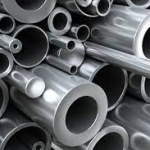 A prolonged period of high aluminium prices, created in part by production cuts in China, is expected to encourage new capacity elsewhere in the world, which will eventually weigh on prices at 10-year highs.
A prolonged period of high aluminium prices, created in part by production cuts in China, is expected to encourage new capacity elsewhere in the world, which will eventually weigh on prices at 10-year highs.
Benchmark aluminium on the London Metal Exchange reached $2,734.5 a tonne on Wednesday, a 37% gain this year and the highest since May 2011. Aluminium is widely used in transport, packaging and construction.
Robust demand growth, rising transportation costs and shortages in Europe and the United States started the rally earlier this year, with China picking up the baton in recent months by imposing production cuts to reduce energy use and cut emissions.
Deficits and high prices in the coming years will support aluminium prices, leading to investment in new capacity in Russia, Malaysia, India and the Middle East.
Year-to-year production losses in China have reached 520,000 tonnes. The 2021 estimate for market balance went from a surplus of 530,000 tonnes to a deficit of 700,000 tonnes. A persistent deficit is expected until 2025.
Analysts expect total global aluminium demand of around 76 million tonnes in 2025, up 10% from this year, leaving a supply deficit of around two million tonnes.
Aluminium prices are significantly above marginal production costs or the 90th percentile of the cost curve, at around $2,100 per tonne on a global basis.
Higher prices could also convince Chinese companies to build aluminium smelters in places like Indonesia. New capacity will have to be complemented by increased scrap utilisation, already around 65-70% globally.
.gif) Loading
Loading

